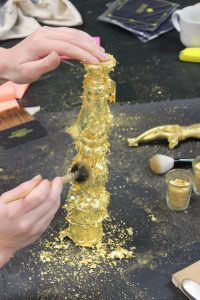Serving as the winter archives intern with Mackinac State Historic Parks has kept Jessica Marks busy, from inventorying the library to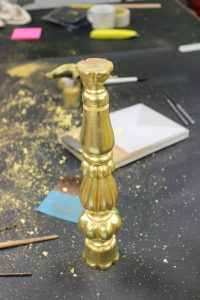

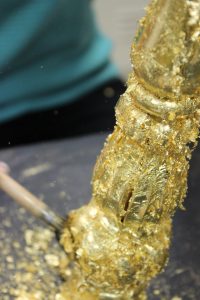

Gilding is the process of taking gold and covering an object with it. The gilding technique that’s being used on the altar pieces is oil gilding. This is where a “leaf,” which is a 2.5 inch square of gold that’s about as thin as tissue paper, is carefully applied to an adhesive surface. To guide the leaf’s wispy behavior, a brush made from squirrel fur called the gilder’s tip is used to control the leaf with static.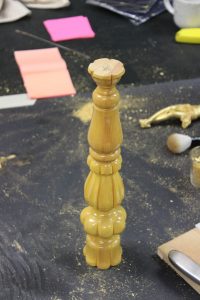

After applying the gold leaf, it gets messy. The gilder switches to a regular boar hair brush, and then the leaves are lightly brushed on the object with a light tapping motion. This motion causes tiny flakes of the leaves that weren’t on the adhesive to scatter about the work space, while more importantly working the leaf onto the object. The final step is to smooth out the leaves already on the object to attain a golden gleam. This is achieved by using a brush in light, swirling motion.
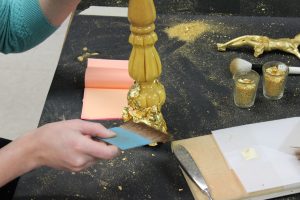

“Also, turning ordinary objects, such as a wooden candlestick, into an imitation golden candlestick is a fun, hands-on experience,” she said.
You can see the finished gilded candlesticks, and cross at the Church of Ste. Anne once Colonial Michilimackinac opens for the season on May 2nd.